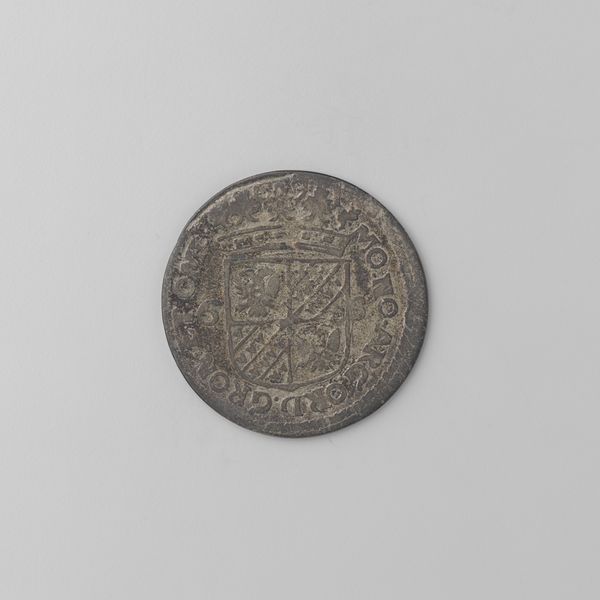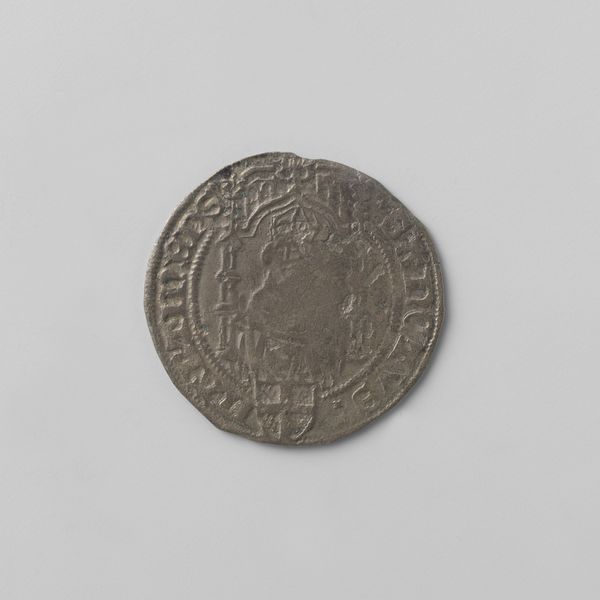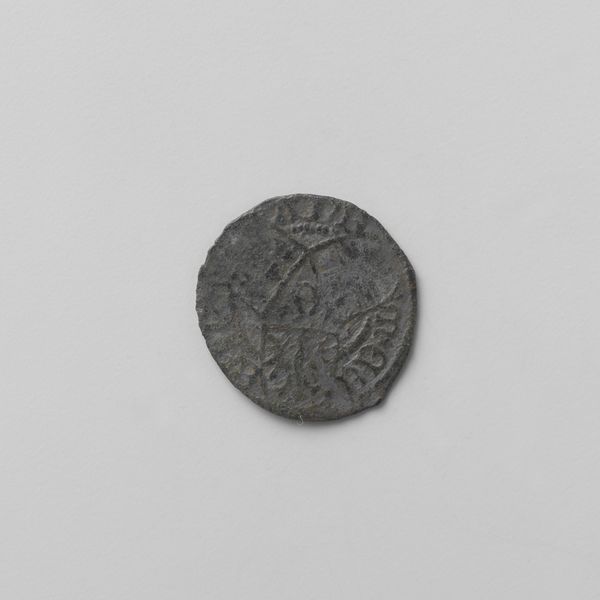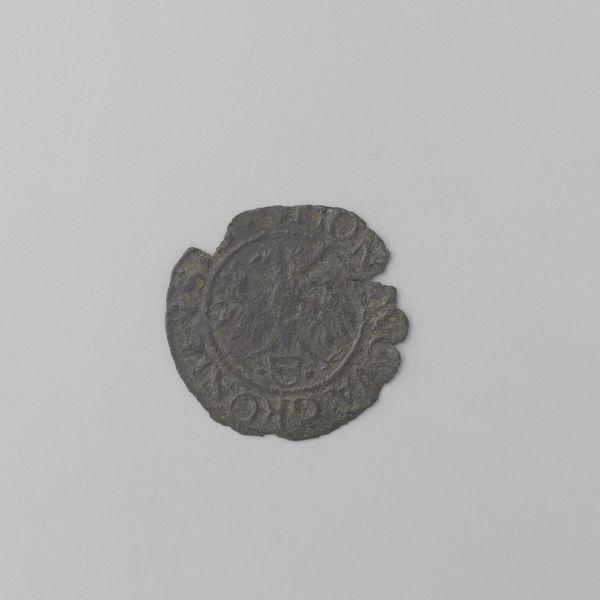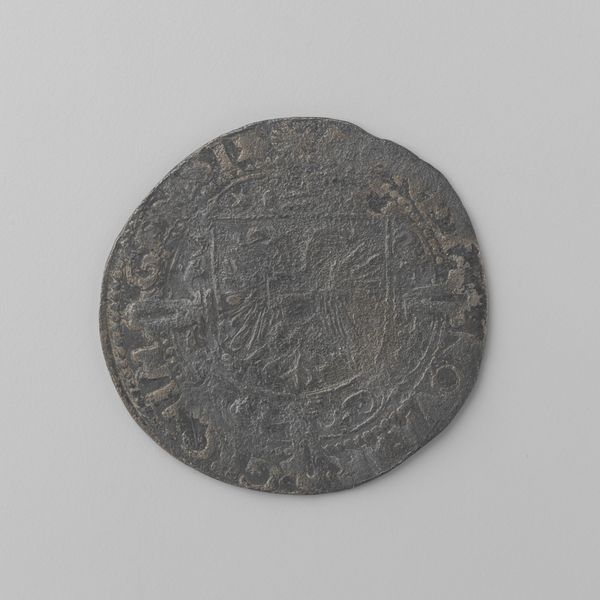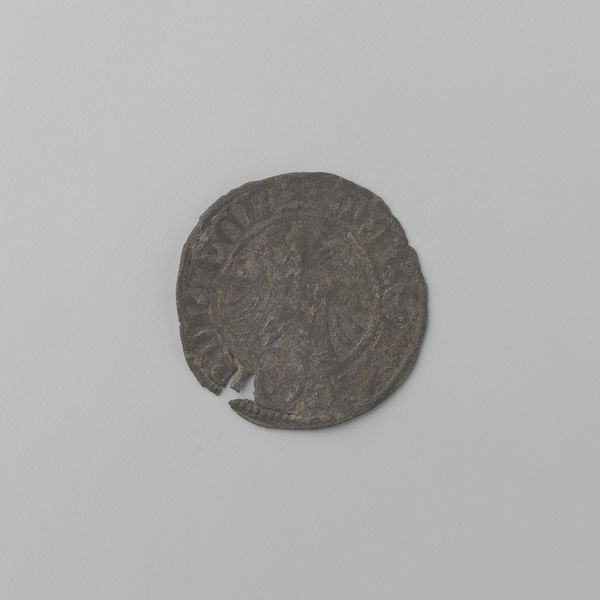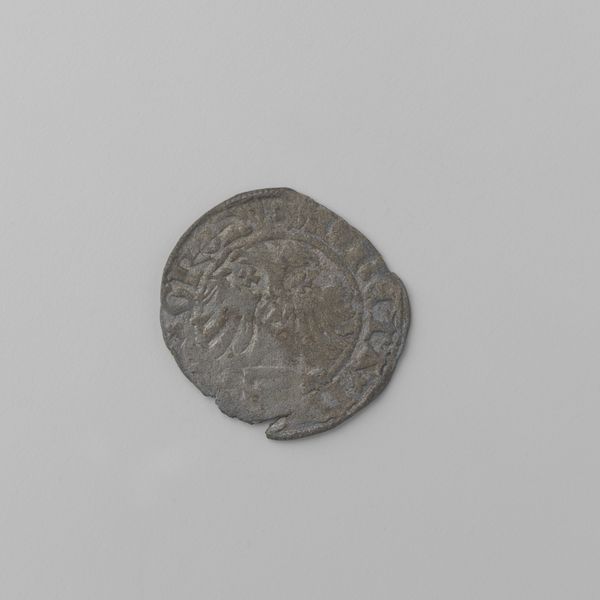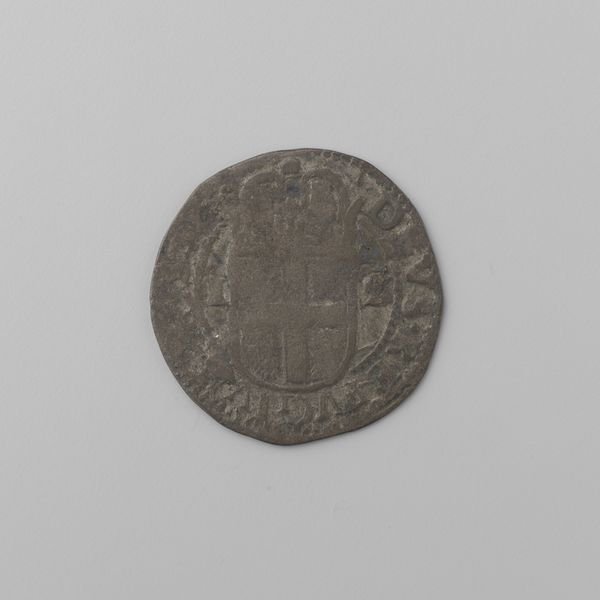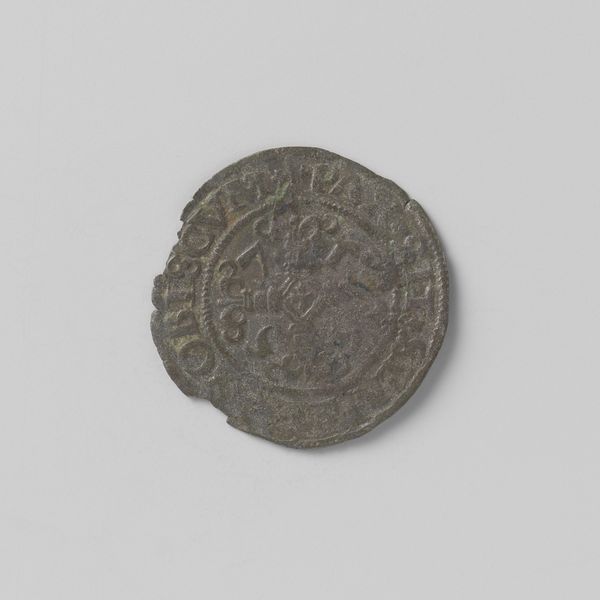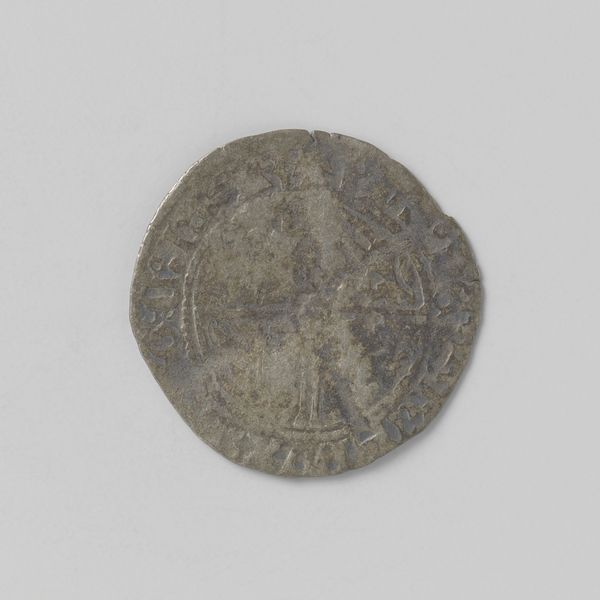
silver, print, metal, engraving
#
silver
# print
#
metal
#
asian-art
#
landscape
#
history-painting
#
coin
#
engraving
Dimensions: diameter 1.7 cm, weight 0.72 gr
Copyright: Rijks Museum: Open Domain
Curator: This is a 1/16 gulden coin from 1802, produced for the Dutch East Indies. It’s small, made of silver, and showcases a ship at sea. What strikes you about it? Editor: It feels weighty, despite its size. That ship—almost like a ghost ship on troubled waters, all grayscale and heavy with unspoken histories. Curator: Precisely. We should remember that in 1802, the Dutch East Indies were under the control of the Batavian Republic, a revolutionary government heavily influenced by France. This coin served as a very material representation of colonial power, produced during a period of immense social and political upheaval in the Netherlands and its colonies. Editor: The ship is fascinating. In iconographic terms, ships often represent journeys, exploration, but also conquest. Considering the context, its presence here underscores the exploitation inherent in the Dutch colonial project. The ocean was a conduit for resources, people, and power dynamics that persist to this day. Curator: It's not merely a symbol of neutral travel. Consider the inscription around the rim— "INDIA BATAVORUM"—clearly linking the Batavian Republic to its colonial holdings. And who benefitted from that system? The wealthy Dutch merchants, the military elite, while it simultaneously dispossessed and enslaved countless others. This tiny coin embodies so much structural violence. Editor: Absolutely. The ocean, rendered here as choppy lines, also functions as a symbol: a powerful, untamable force that ironically facilitates domination. I’m reminded of theories surrounding liquid modernity, about how these kinds of systems create conditions of constant precarity and change, like the tides themselves. Curator: Exactly, and this seemingly innocuous coin circulated in that reality, directly implicated. Understanding its historical context compels us to reckon with uncomfortable truths about our interconnected global history and continuing repercussions of colonialism. Editor: Reflecting on this gulden, I see that objects, even small ones, are potent carriers of symbolic meaning, imbued with the ideologies and power dynamics of their time. Curator: Yes, it serves as a miniature lens through which we can scrutinize a complex and often brutal period of history.
Comments
No comments
Be the first to comment and join the conversation on the ultimate creative platform.
